Glastonbury Festival is a cornerstone of music culture, known for its iconic performances and commitment to sustainability. This article explores the festival’s rich history, highlights memorable performances by artists like David Bowie and Beyoncé, and examines its sustainability initiatives aimed at reducing environmental impact. Additionally, it addresses challenges faced in ticket accessibility and evolving audience expectations, while looking ahead to future trends in music and eco-friendly practices.
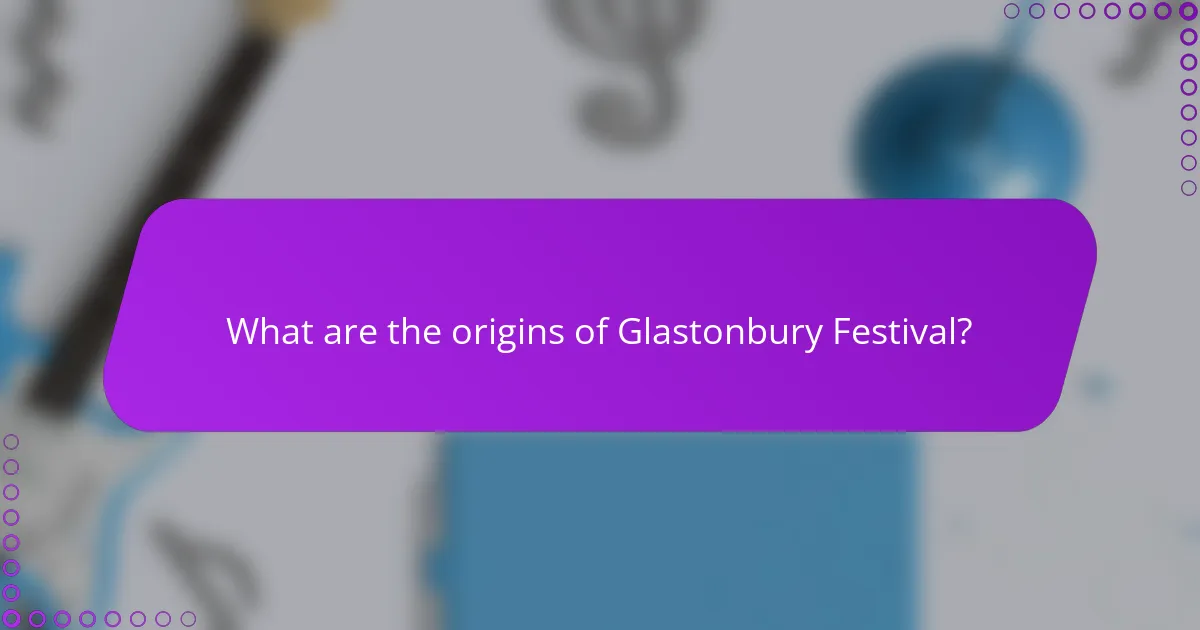
What are the origins of Glastonbury Festival?
The Glastonbury Festival originated in 1970, inspired by the free-spirited ethos of the 1960s. Michael Eavis, the founder, hosted the first event on his farm in Somerset, featuring local bands and a small audience. Over the years, it evolved into a major cultural phenomenon, known for its diverse lineup and iconic performances. The festival’s commitment to sustainability has grown, incorporating eco-friendly practices and community initiatives, reflecting its unique attribute of environmental consciousness.
How has Glastonbury evolved since its inception?
Glastonbury Festival has transformed significantly since its inception in 1970, evolving into a global cultural phenomenon. Initially a small gathering, it now attracts around 200,000 attendees annually, showcasing diverse music genres and art forms. Iconic performances, such as David Bowie’s in 1971 and Beyoncé’s in 2011, have cemented its status in music history. Sustainability initiatives, including waste reduction and renewable energy use, reflect its commitment to environmental responsibility. This evolution highlights Glastonbury’s adaptability and influence in shaping the festival landscape.
What role has the festival played in British music culture?
The Glastonbury Festival has significantly shaped British music culture by providing a platform for diverse genres and emerging artists. Established in 1970, it has hosted iconic performances from legends like David Bowie and Beyoncé, influencing music trends and audience expectations. The festival promotes a sense of community and activism, integrating sustainability initiatives that resonate with modern values. Its cultural impact extends beyond music, fostering creativity and social change across the UK.
![]()
Which iconic performances have defined Glastonbury Festival?
Glastonbury Festival has been defined by iconic performances from artists such as David Bowie in 1971, who captivated audiences with his theatrical presence. Other memorable moments include Beyoncé’s 2011 headline set, showcasing her vocal prowess and stagecraft. In 1997, Radiohead’s performance marked a pivotal moment in the festival’s history, blending alternative rock with environmental themes. Additionally, in 2005, Coldplay delivered a powerful show that resonated with fans worldwide. These performances not only highlight musical talent but also reflect the festival’s evolving cultural significance.
What are the most memorable headliners in festival history?
Glastonbury Festival has hosted many memorable headliners, including iconic performances by David Bowie, Beyoncé, and Radiohead. These artists have left a lasting impact on festival history through their unique contributions and unforgettable shows. David Bowie’s 1971 performance showcased his innovative style, while Beyoncé’s 2011 set was a powerful display of artistry and empowerment. Radiohead’s various appearances have solidified their status as a defining band in the festival’s legacy. Each of these performances highlights the festival’s commitment to showcasing diverse musical talent.
How have legendary performances shaped audience expectations?
Legendary performances at Glastonbury Festival have significantly raised audience expectations for live music events. Iconic acts like David Bowie and Beyoncé set high standards for artistry and production quality. As a result, attendees now anticipate not only great music but also memorable visual experiences and impactful messages from performers. This evolution has influenced how artists prepare for their sets, often incorporating elaborate staging and innovative technology to meet or exceed audience expectations.
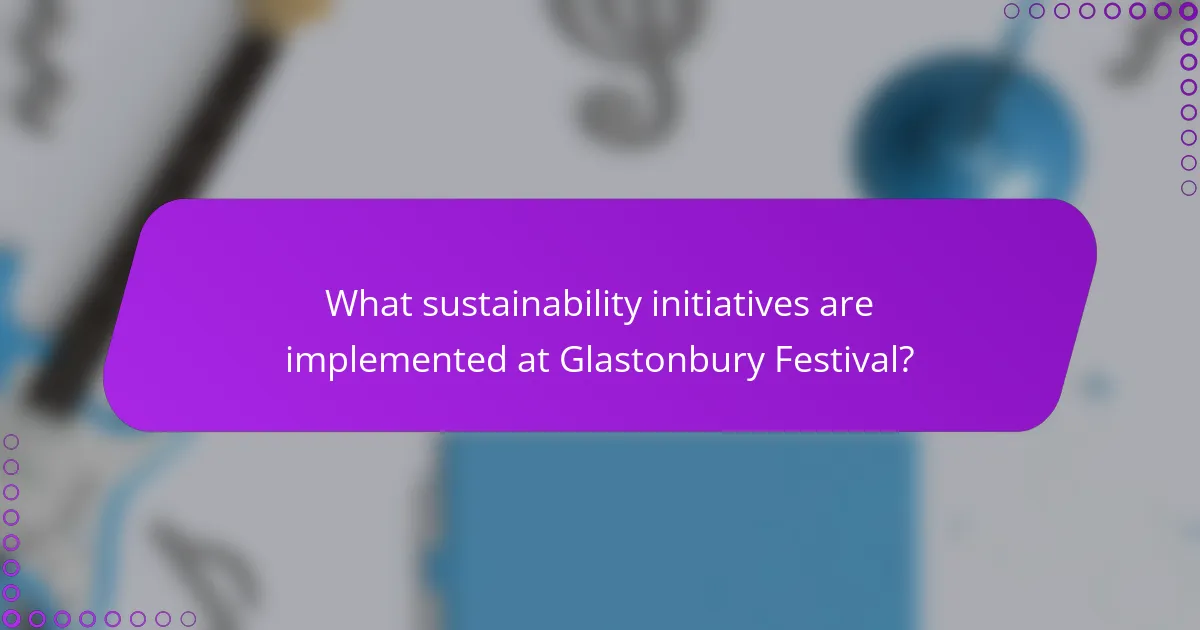
What sustainability initiatives are implemented at Glastonbury Festival?
Glastonbury Festival implements various sustainability initiatives aimed at reducing its environmental impact. Key initiatives include waste reduction programs, renewable energy use, and water conservation efforts. The festival encourages recycling, composting, and the use of reusable cups to minimize waste. Additionally, it sources food and products locally to lower carbon footprints. The commitment to sustainability is evident in the festival’s goal of becoming carbon neutral by 2030.
How does Glastonbury address environmental concerns?
Glastonbury Festival actively addresses environmental concerns through various sustainability initiatives. These include waste reduction strategies, renewable energy use, and biodiversity conservation. The festival aims to minimize its carbon footprint by encouraging recycling and offering eco-friendly transport options. Additionally, it collaborates with local organizations to enhance the surrounding natural environment, demonstrating a commitment to long-term ecological responsibility.
What innovative practices have emerged in recent years?
Innovative practices at Glastonbury Festival include enhanced sustainability measures, digital ticketing solutions, and community engagement initiatives. The festival has increased its use of renewable energy, aiming for a carbon-neutral footprint by 2025. Digital ticketing has streamlined entry, reducing paper waste. Community programs promote local artistry and support for nearby businesses. These efforts showcase Glastonbury’s commitment to environmental and social responsibility.
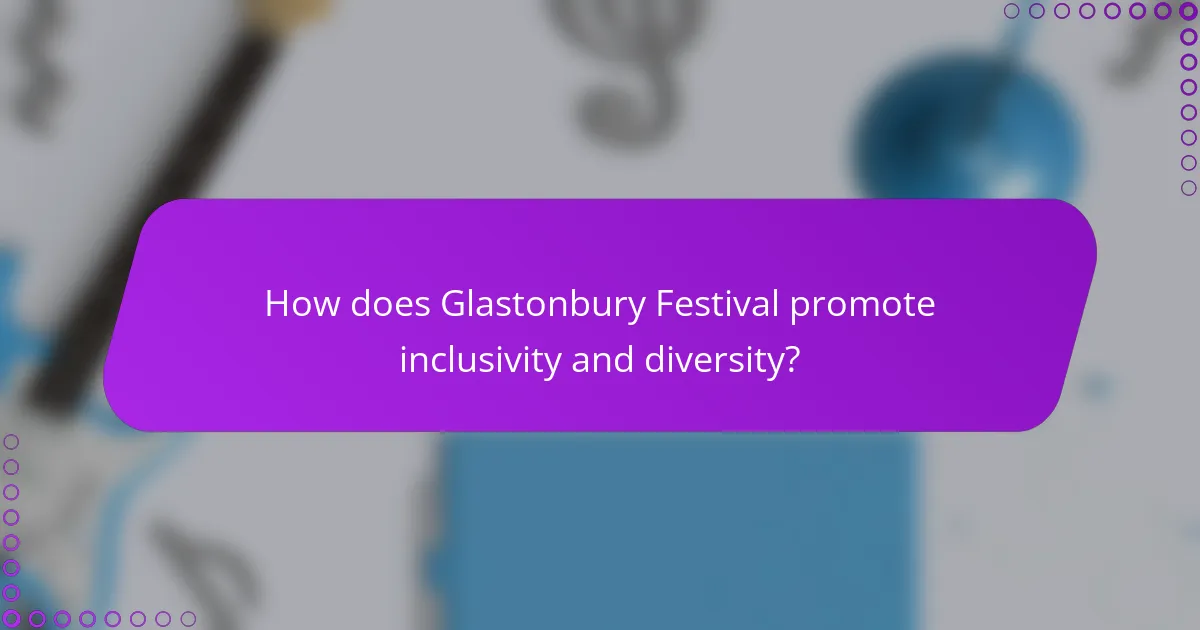
How does Glastonbury Festival promote inclusivity and diversity?
Glastonbury Festival actively promotes inclusivity and diversity through various initiatives. It features a wide range of artists from different backgrounds and genres, ensuring representation across the lineup. The festival also implements accessibility measures, such as dedicated viewing areas and facilities for individuals with disabilities. Additionally, it supports community projects that foster social inclusion and cultural diversity. By prioritizing these aspects, Glastonbury cultivates an environment where all attendees feel welcome and valued.
What programs support underrepresented artists?
Glastonbury Festival supports underrepresented artists through initiatives like the Emerging Talent Competition and partnerships with organizations promoting diversity. These programs provide platforms for new talent, ensuring inclusivity within the festival’s lineup. The festival’s commitment to sustainability also extends to supporting artists from various backgrounds, fostering a diverse artistic community.
How does the festival engage with local communities?
The Glastonbury Festival actively engages with local communities through various initiatives. It supports local businesses by promoting their products and services during the event. The festival also collaborates with local charities, providing funding and resources to enhance community projects. Additionally, it offers volunteer opportunities, allowing residents to participate in the festival’s operations. Environmental sustainability efforts further involve local stakeholders, emphasizing ecological awareness within the community. These actions foster a strong connection between the festival and its surrounding areas.
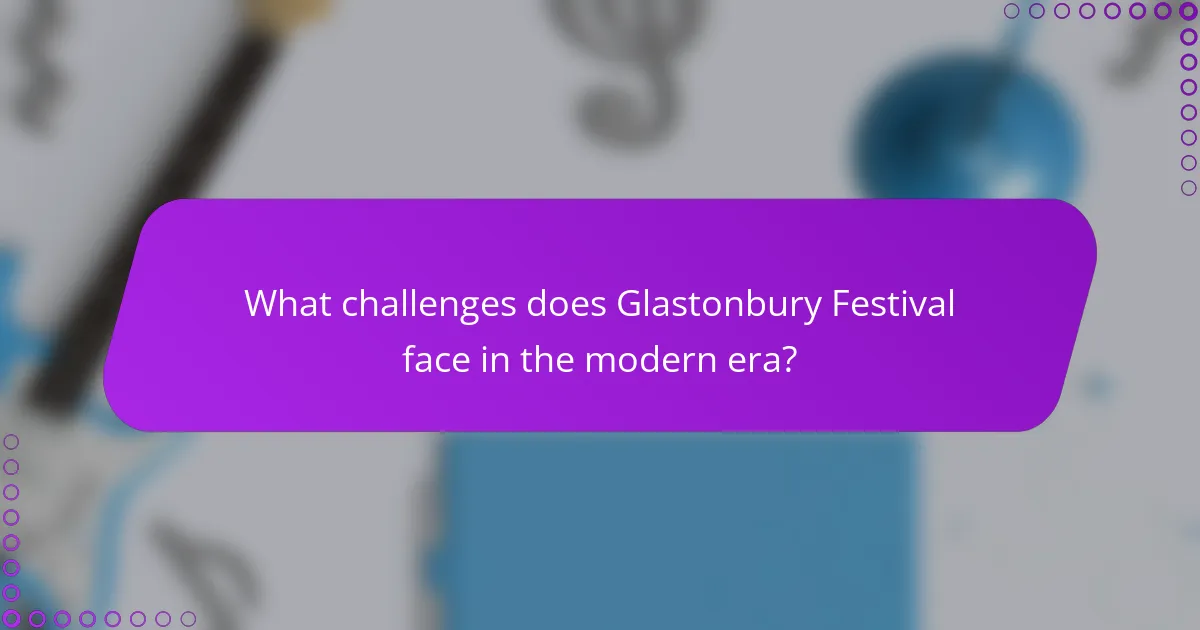
What challenges does Glastonbury Festival face in the modern era?
Glastonbury Festival faces several challenges in the modern era, including sustainability, ticket accessibility, and evolving audience expectations. Sustainability is a critical concern as the festival seeks to minimize its environmental impact through initiatives like waste reduction and renewable energy use. Ticket accessibility remains a challenge, with high demand leading to rapid sell-outs and issues with online purchasing systems. Additionally, audience expectations are changing, with attendees increasingly seeking diverse lineups and enhanced experiences. These factors require ongoing adaptation to maintain the festival’s relevance and success.
How do weather conditions impact festival logistics?
Weather conditions significantly impact festival logistics by affecting attendance, safety, and infrastructure. For instance, heavy rain can lead to muddy grounds, complicating access and movement. Festivals like Glastonbury have historically faced challenges due to weather, necessitating advanced planning for drainage and transportation. The festival’s sustainability initiatives also focus on minimizing environmental impact, which includes adapting logistics to weather patterns. Effective communication with attendees about weather-related changes is crucial for ensuring safety and enjoyment.
What are the economic implications of hosting such a large event?
Hosting the Glastonbury Festival has significant economic implications. The event generates substantial revenue for local businesses, boosting tourism and creating temporary jobs. In 2019, it was estimated that the festival contributed around £100 million to the local economy. Additionally, the festival promotes sustainable practices, attracting environmentally conscious attendees, which can further enhance its economic impact. The influx of visitors also leads to increased spending on accommodation, food, and transportation, benefiting the entire region.
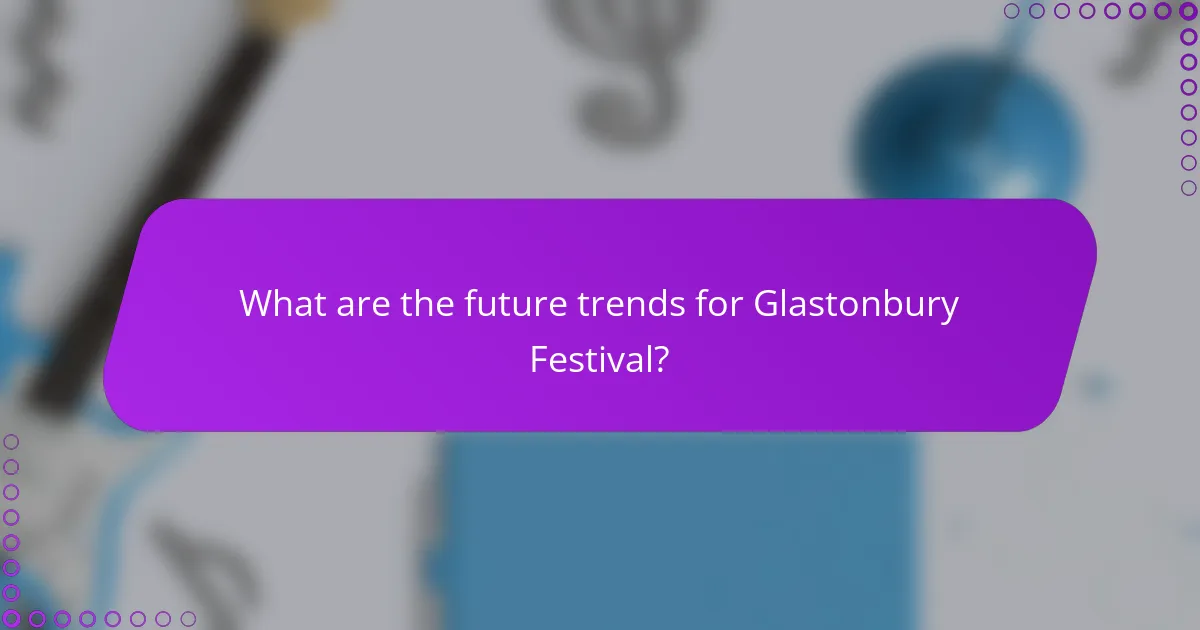
What are the future trends for Glastonbury Festival?
The future trends for Glastonbury Festival focus on enhanced sustainability, diverse lineups, and technological integration. Increasing emphasis on eco-friendly practices will shape operations, aiming for carbon neutrality by 2030. The festival will likely feature a broader array of genres and artists, reflecting global music trends. Additionally, advancements in technology will enhance the attendee experience through improved app features and virtual engagement options.
How might technology influence the festival experience?
Technology significantly enhances the festival experience at Glastonbury by improving accessibility, engagement, and sustainability. Mobile apps provide real-time updates on performances, helping attendees navigate schedules and stages efficiently. Virtual reality experiences allow fans to enjoy iconic performances from anywhere, expanding the festival’s reach. Additionally, sustainable technology initiatives, such as solar-powered stages and waste reduction systems, promote environmental responsibility. These innovations create a more immersive and responsible festival atmosphere, aligning with Glastonbury’s commitment to sustainability.
What can attendees expect in upcoming editions?
Attendees can expect a diverse lineup of artists, sustainability initiatives, and engaging experiences at upcoming Glastonbury Festival editions. The festival continues to prioritize eco-friendly practices, enhancing its commitment to reducing environmental impact. For example, the introduction of refillable water stations and compostable materials showcases Glastonbury’s dedication to sustainability. Additionally, attendees will enjoy immersive art installations and workshops that promote community engagement and creativity. Each edition aims to build on the festival’s rich history while embracing innovation and inclusivity.
What are best practices for enjoying Glastonbury Festival?
To enjoy Glastonbury Festival, prioritize planning, sustainability, and personal comfort. Arrive early to secure a good spot and familiarize yourself with the layout. Bring reusable items to minimize waste, as the festival emphasizes eco-friendly practices. Stay hydrated and wear appropriate clothing for unpredictable weather. Familiarize yourself with the performance schedule to catch must-see acts while allowing time to explore the festival’s diverse offerings.